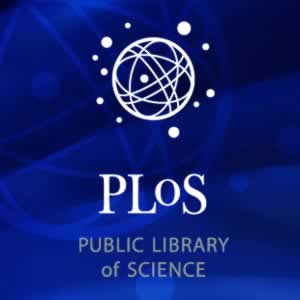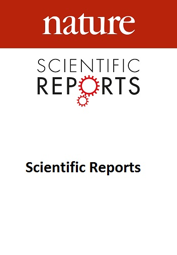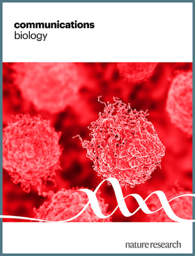Publications
Google Scholar Profile
ORCID Profile
title color indicates first or co-first authorship for journal articles
2023
-
 A computer vision based optical method for measuring fluid level in cell culture platesPierre V. Baudin, and Mircea TeodorescuPLOS ONE, Sep 2023
A computer vision based optical method for measuring fluid level in cell culture platesPierre V. Baudin, and Mircea TeodorescuPLOS ONE, Sep 2023For a transparent well with a known volume capacity, changes in fluid level result in predictable changes in magnification of an overhead light source. For a given well size and fluid, the relationship between volume and magnification can be calculated if the fluid’s index of refraction is known or in a naive fashion with a calibration procedure. Light source magnification can be measured through a camera and processed using computer vision contour analysis with OpenCV. This principle was applied in the design of a 3D printable sensing device using a raspberry pi zero and a camera.
2022
-
 Modular automated microfluidic cell culture platform reduces glycolytic stress in cerebral cortex organoidsSpencer T. Seiler, Gary L. Mantalas, John Selberg, and 12 more authorsScientific Reports, Nov 2022
Modular automated microfluidic cell culture platform reduces glycolytic stress in cerebral cortex organoidsSpencer T. Seiler, Gary L. Mantalas, John Selberg, and 12 more authorsScientific Reports, Nov 2022Organ-on-a-chip systems combine microfluidics, cell biology, and tissue engineering to culture 3D organ-specific in vitro models that recapitulate the biology and physiology of their in vivo counterparts. Here, we have developed a multiplex platform that automates the culture of individual organoids in isolated microenvironments at user-defined media flow rates. Programmable workflows allow the use of multiple reagent reservoirs that may be applied to direct differentiation, study temporal variables, and grow cultures long term. Novel techniques in polydimethylsiloxane (PDMS) chip fabrication are described here that enable features on the upper and lower planes of a single PDMS substrate. RNA sequencing (RNA-seq) analysis of automated cerebral cortex organoid cultures shows benefits in reducing glycolytic and endoplasmic reticulum stress compared to conventional in vitro cell cultures.
-
 IoT cloud laboratory: Internet of Things architecture for cellular biologyDavid F. Parks, Kateryna Voitiuk, Jinghui Geng, and 20 more authorsInternet of Things, Nov 2022
IoT cloud laboratory: Internet of Things architecture for cellular biologyDavid F. Parks, Kateryna Voitiuk, Jinghui Geng, and 20 more authorsInternet of Things, Nov 2022The Internet of Things (IoT) provides a simple framework to control online devices easily. IoT is now a commonplace tool used by technology companies but is rarely used in biology experiments. IoT can benefit cloud biology research through alarm notifications, automation, and the real-time monitoring of experiments. We developed an IoT architecture to control biological devices and implemented it in lab experiments. Lab devices for electrophysiology, microscopy, and microfluidics were created from the ground up to be part of a unified IoT architecture. The system allows each device to be monitored and controlled from an online web tool. We present our IoT architecture so other labs can replicate it for their own experiments.
-
Remote microscopy for biological sciencesVictoria Ly, Pierre Baudin, Pat Pansodtee, and 4 more authorsNov 2022US Patent App. 17/738,251
-
System and method for simultaneous longitudinal biological imagingVictoria Ly, Pierre Baudin, Yohei Rosen, and 4 more authorsNov 2022US Patent App. 17/738,239
-
 Cloud-controlled microscopy enables remote project-based biology education in underserved Latinx communitiesPierre V. Baudin, Raina E. Sacksteder, Atesh K. Worthington, and 21 more authorsHeliyon, Nov 2022Publisher: Elsevier
Cloud-controlled microscopy enables remote project-based biology education in underserved Latinx communitiesPierre V. Baudin, Raina E. Sacksteder, Atesh K. Worthington, and 21 more authorsHeliyon, Nov 2022Publisher: ElsevierProject-based learning (PBL) has long been recognized as an effective way to teach complex biology concepts. However, not all institutions have the resources to facilitate effective project-based coursework for students. We have developed a framework for facilitating PBL using remote-controlled internet-connected microscopes. Through this approach, one lab facility can host an experiment for many students around the world simultaneously. Experiments on this platform can be run on long timescales and with materials that are typically unavailable to high school classrooms. This allows students to perform novel research projects rather than just repeating standard classroom experiments. To investigate the impact of this program, we designed and ran six user studies with students worldwide. All experiments were hosted in Santa Cruz and San Francisco, California, with observations and decisions made remotely by the students using their personal computers and cellphones. In surveys gathered after the experiments, students reported increased excitement for science and a greater desire to pursue a career in STEM. This framework represents a novel, scalable, and effective PBL approach that has the potential to democratize biology and STEM education around the world.
2021
-
 Low cost cloud based remote microscopy for biological sciencesPierre V. Baudin, Victoria T. Ly, Pattawong Pansodtee, and 10 more authorsInternet of Things, Sep 2021
Low cost cloud based remote microscopy for biological sciencesPierre V. Baudin, Victoria T. Ly, Pattawong Pansodtee, and 10 more authorsInternet of Things, Sep 2021A low cost remote imaging platform for biological applications was developed. The “Picroscope” is a device that allows the user to perform longitudinal imaging studies on multi-well cell culture plates. Here we present the network architecture and software used to facilitate communication between modules within the device as well as system communication with external cloud services. A web based console was created to control the device and view experiment results. Post processing tools were developed to analyze captured data in the cloud. The result is a platform for monitoring biological experiments from outside the lab.
-
 Picroscope: low-cost system for simultaneous longitudinal biological imagingVictoria T. Ly, Pierre V. Baudin, Pattawong Pansodtee, and 16 more authorsCommunications Biology, Nov 2021
Picroscope: low-cost system for simultaneous longitudinal biological imagingVictoria T. Ly, Pierre V. Baudin, Pattawong Pansodtee, and 16 more authorsCommunications Biology, Nov 2021Simultaneous longitudinal imaging across multiple conditions and replicates has been crucial for scientific studies aiming to understand biological processes and disease. Yet, imaging systems capable of accomplishing these tasks are economically unattainable for most academic and teaching laboratories around the world. Here, we propose the Picroscope, which is the first low-cost system for simultaneous longitudinal biological imaging made primarily using off-the-shelf and 3D-printed materials. The Picroscope is compatible with standard 24-well cell culture plates and captures 3D z-stack image data. The Picroscope can be controlled remotely, allowing for automatic imaging with minimal intervention from the investigator. Here, we use this system in a range of applications. We gathered longitudinal whole organism image data for frogs, zebrafish, and planaria worms. We also gathered image data inside an incubator to observe 2D monolayers and 3D mammalian tissue culture models. Using this tool, we can measure the behavior of entire organisms or individual cells over long-time periods.